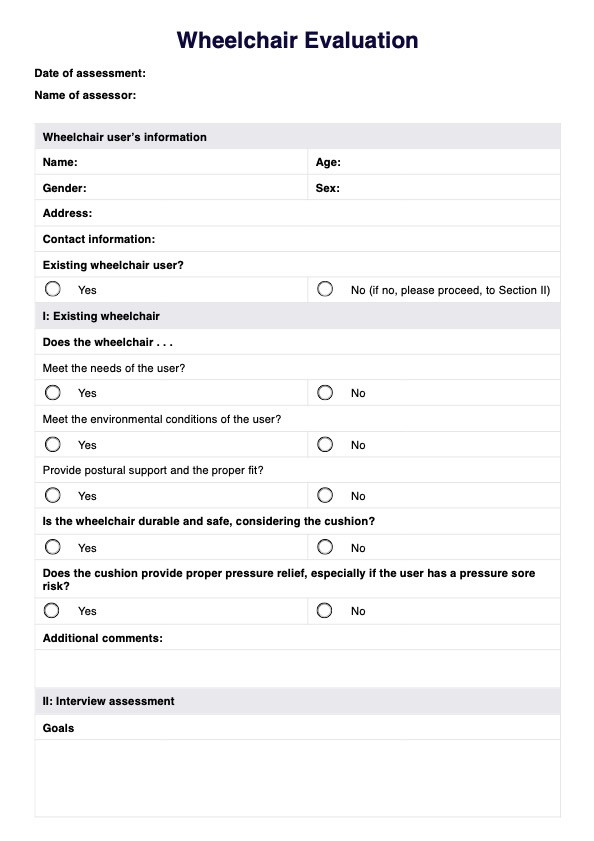A wheelchair evaluation aims to assess an individual's functional mobility and physical needs to recommend the most appropriate wheelchair and seating system for their unique situation.

Wheelchair Evaluation
Download our Wheelchair Evaluation template to streamlines the documentation process through a evaluation of clients' mobility and seating needs.
Use Template
Wheelchair Evaluation Template
Commonly asked questions
Typically, wheelchair evaluations are conducted by qualified healthcare professionals such as occupational therapists or physical therapists with expertise in wheeled mobility and seating.
The duration varies depending on the complexity of the individual's needs, but evaluations generally take 1-2 hours. This includes gathering information, performing assessments, and discussing potential options.
EHR and practice management software
Get started for free
*No credit card required
Free
$0/usd
Unlimited clients
Telehealth
1GB of storage
Client portal text
Automated billing and online payments











